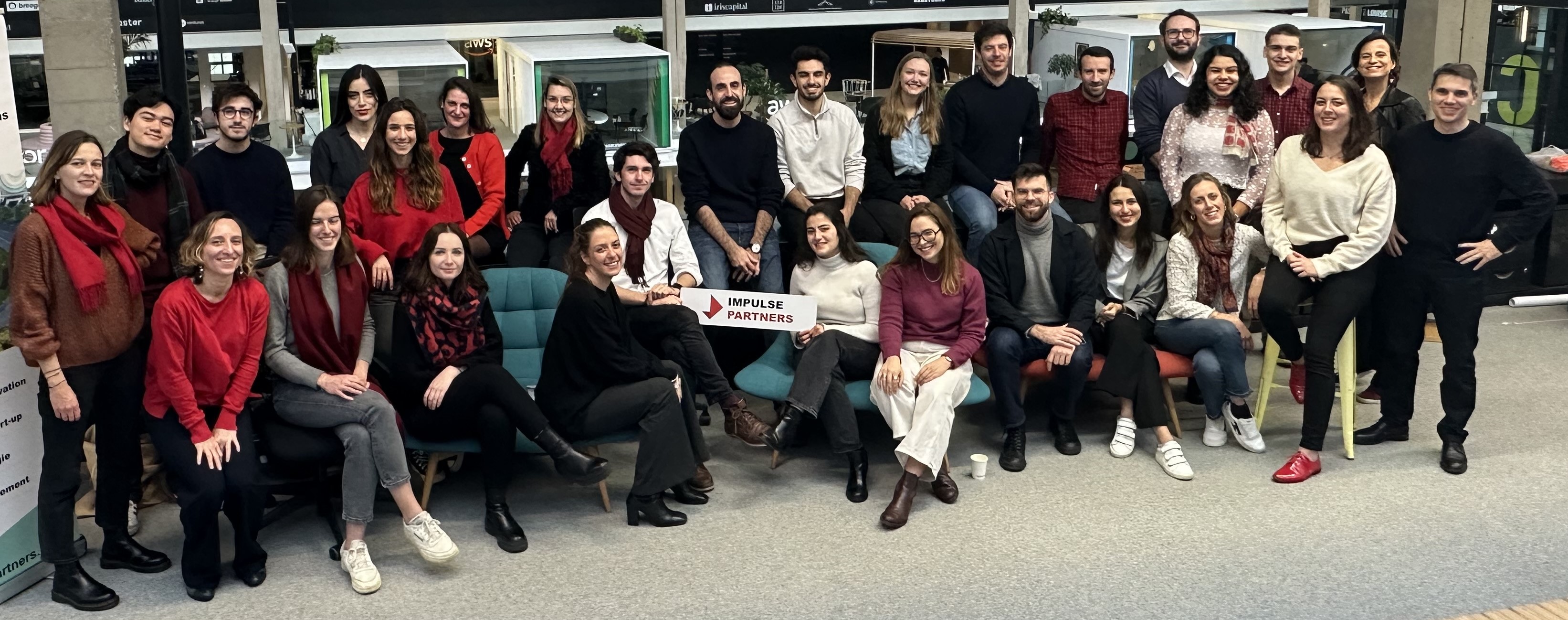The latest IPCC report focuses on existing solutions to fight against climate change. This article aims to highlight existing solutions that respond to climate change issues within the Impulse Partners ecosystem: helping cities adapt to rising temperatures and flooding, solutions to prevent and anticipate climate risks and to decarbonize the most energy-intensive industrial sectors.
OVERVIEW OF THE LATEST IPCC REPORT
|
Published on March 2023, the latest report from the United Nations Intergovernmental Panel on Climate Change (IPCC) serves as a renewed call to address the pressing issues of climate change promptly. It emphasizes the importance of implementing robust and impactful measures to reduce global warming. Despite existing endeavors, the current magnitude of efforts falls short in sufficiently diminishing greenhouse gas emissions, therefore increasing the risks faced by humanity and biodiversity:
- Lack of food and water
- Increased health risks
- Increased natural disasters (floods, fires, cyclones)
- Increased heat waves
The latest report adopts a more solution-driven approach, advocating for rapid and profound transformation across all sectors to achieve a halving of CO² emissions in the next 12 years. While the IPCC warns of the dangers of techno-optimism - the idea that technological innovation alone can meet the challenge of climate change - there are innovative solutions available to enhance resilience to risks and vulnerabilities in cities and communities, as well as to decarbonize human activities. This article will present existing solutions within the Impulse Partners ecosystem to the problems related to climate change.
|
|
|
ADAPTING: SOLUTIONS TO ANTICIPATE AND REDUCE VULNERABILITY TO THE EFFECTS OF CLIMATE CHANGE
|
|
|
|
As environmental threats continue to rise, it is crucial to take action and implement effective solutions to minimize the negative impact of climate change on both people and the environment.
Which solutions for which problems?
Increasing temperatures are causing growing challenges for quality of life in urban areas. In order to mitigate the health risks associated with high temperatures, it's necessary to adapt new urban planning strategies. Several startups in our ecosystem offer solutions to tackle extreme temperature fluctuations in urban environments with nature-based solutions such as Gramitherm (Belgium). Gramitherm has developed a new form of bio-based insulation using "waste" grass which helps improve temperature management in buildings. This new type of insulation offers excellent protection against cold, heat, and sound. The product also has a negative carbon footprint as the CO² produced during the various production phases is less important than the CO² captured by grass during its growth.
The escalation of flooding is a major consequence of global warming. To cope with these hazards, the startup Hohonu (USA) offers a suite of tools which use localized proprietary sensors to collect water data in order to protect communities from flood risks.
Ensuring the resilience of societal and economic activities requires addressing the substantial challenges of preventing and anticipating climate-related risks. In this respect, Upstream Tech, (USA) builds environmental conservation decision-making tools to improve natural resource management. Upstream Tech is specialized in streamflow forecasting and water intelligence. Artys (Italy) has developed the "Smart Rainfall System" (SRS), which estimates and pinpoints rainfall in real-time, providing short-term forecast of hydrogeological risks. It allows improved emergency management, fact-based planning, and efficient communication with residents. The data collected by SRS stations allow the system to create interactive high resolution, real time rainfall and risk maps of the whole monitored area.
MITIGATION: INNOVATION TO REDUCE EMISSIONS
|
Adapting does not mean giving up the fight against climate change. The IPCC reaffirms the need to accelerate the reduction of greenhouse gas emissions.
Which solutions for which problems?
The industrial and construction sectors still emit persistently high levels of greenhouse gases (GHG). According to the IPCC, these sectors have high emission reduction potential, and there are numerous innovative solutions available that specifically target them.
The construction sector is one of the most polluting sectors with two main sources of CO² emissions:
The manufacturing of construction materials essential for building design: using eco-designed materials and the recycling of construction waste can significantly reduce the construction industry’s carbon footprint. Numerous solutions facilitate this transition, such as the startup Excess Materials Exchange (Netherlands), which classifies waste materials and helps find secondary uses in order to contribute to the development of a more circular economy. Biomason (USA), which has developed multiple solutions to help decarbonize the construction industry. Biomason uses natural microorganisms to grow structural Biocement® in ambient temperatures, harnessing the power of biotechnology to reinvent traditional cement and offer a more planet-friendly alternative.
Energy consumption in the operation phase of buildings: specialized companies play a crucial role in enhancing the energy efficiency of buildings. The startup Thermosphr (Germany) offers thermal solutions with a unique predictive control technology saving over 30% of buildings’ energy footprint. Their model is customized for each building to predict indoor temperature variations and model HVAC equipment efficiency, calculate optimized HVAC settings, and deliver insights on building performance.
In the industrial sector, there is potential to deploy more efficient means of production. The startup Industrial Analytics (Germany) assists industrial players by tracking energy consumption as a whole and identifying the most energy consuming parts of production plants using a proprietary AI tool.
Carbon sequestration can also be an additional solution to reducing CO² emissions. These techniques encompass natural processes, such as carbon uptake by soils and vegetation, as well as the development of technological solutions for carbon sequestration. The startup BlueGreen Water Technologies (Israel) has developed net blue, the first deep water, nature-based climate solution for atmospheric carbon removal that is regulatory approved.
Soletair power (Finland) uses a system to harness atmospheric CO² by adapting HVAC systems to direct air capture technology. Buildings become net negative carbon sinks by confining the captured CO² within the concrete material. CarbonCure (Canada) creates carbon removal technologies to help the concrete industry build more efficient businesses and produce cleaner concrete.
|
|
|
If you have any ideas, or would like to discuss about these subjects, contact us!
|
|
|
|
|





